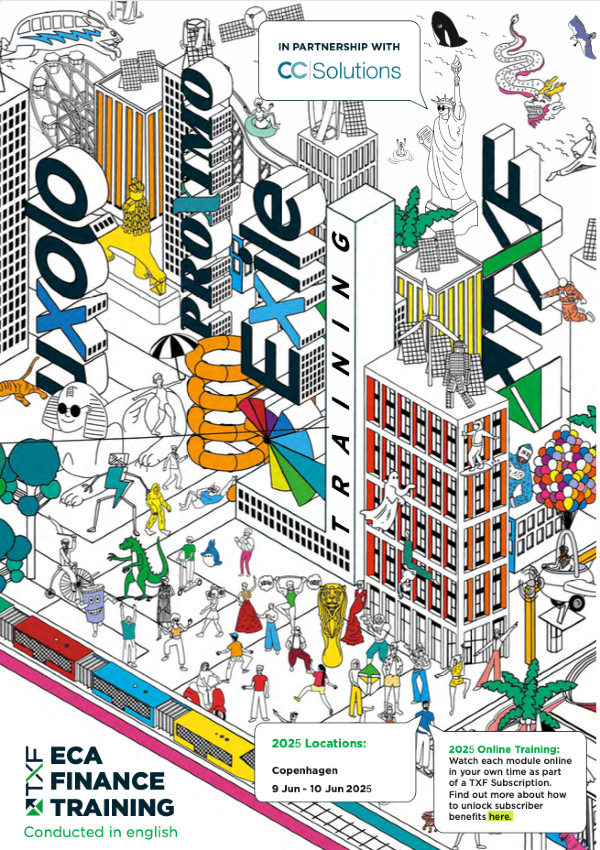Global export finance H1 2018: Numbers crunched without the headache
TXF has released its Global export finance results for H1 2018. From Bpifrance performing best in the first half of this year to Oil & Gas showing the largest volumes in export finance, the findings will continue to surprise..

Click the play button below to begin the podcast.
TXF Data recorded 146 ECA supported deals (a drop of 17 on H1 2017) covering $49.7 billion of financing (a drop of $3.63 billion on H1 2017). This represents an increase of 7.63% in ECA supported deal volume compared with H1 2017.
ECA/DFI coverage of that total debt amounted to 84.5%, a little lower than the average for the whole of 2017, but still high and likely to stay at those levels for the future unless commercial banks can fathom other Basel-friendly ways (synthetic securitisations for example) to offset risk.
The drivers and breaks on growth for the year were:
- Aircraft remains the least active ECA-backed export finance market (page 6), although lack of access to ECA funding has merely resulted in more commercial bank and captive finance deals from the big two aircraft manufacturers, and no dent in their respective order books: Boeing and Airbus racked up $30 billion of firm new orders at the Farnborough air show alone this year, and Boeing expects 42,730 deliveries in the coming 20 years; Airbus is more conservative with 37,390 deliveries. Access to US Ex-Im funding is still out of reach for Boeing, but ECA doors are beginning to open again for Airbus which recently got its first UKEF supported deal – a delivery to Rwandair – since 2016.
- At $12.4 billion in H1 2018, oil and gas ECA-backed volume tops the sector volumes by around $1 billion. But signs are that year-on-year deal flow and volume will have dropped again for the second year in a row by the end of 2018.
- In 2016 ECA-supported conventional power deal volume spiked dramatically from $4.5 billion in 2015 to over $30 billion. But remove the $18.5 billion Barakah nuclear deal from the 2016 figures and conventional power deal volume in 2017 was only around $1 billion less year-on-year at $10 billion.
- Given H1 2018 ECA-supported conventional power volume is around half that of full year 2017, the market is looking static – although a flurry of expected financial closes for major projects in the Middle East and Asia may up the volume in the second half of 2018 (page 7).
- Last year the cruise ship sector had another record year in terms of ECA-supported volume – breaking the $18 billion ceiling. This year looks set to be considerably lower with just $2.5 billion of volume closed in H1 2018 (page7) and only one major confirmed ECA-backed deal likely to close in the coming months. Non-cruise ship supported business also remains a trickle and looks set to come in at end of 2018 at even less than the $1 billion raised in 2017.
- The Middle East retains the largest market share and has grown from 25% in full year 2017 to 34.5% in H1 2018 (page 10), roughly the same as the 34.2% hold it had in H1 2017. With many GCC states hit by ratings downgrades and still facing budget deficits for the first time in their recent history, state-owned borrowers across the region continue to broaden their financial toolkits.
- Little change in where the vast majority ECA-backed loan volume goes – 77% was for deals in excess of $550 million in H1 2018, a slight increase on the 71% for full year 2018 (page 9). Despite ECA attempts to better address the needs of SMEs, the reality is that only 4.5% of ECA supported loans went to deals in the $1-100 million volume range in the past six months.
These are just a few of the highlights from the 28-page TXF Export Finance 2017 report. If you are a subscriber please download the full report by clicking here.
If you are not a subscriber but would like a copy of the report please contact rosie.barton@txfmedia.com





